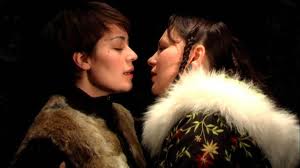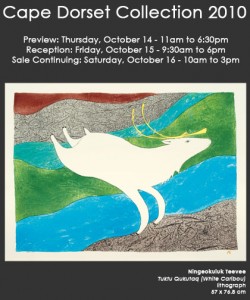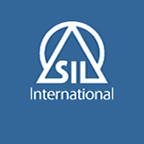Throat Singing – Blending traditional and modern styles
Tanya Tagaq and Cellina Kalluk throat singing
In Inuktitut, throat singing is called katajjaq, pirkusirtuk or nipaquhiit depending on the Canadian Arctic region. I was intrigued the first time I heard traditional, Arctic throat singing – likely on CBC Radio One. It seemed a music form in and of the past until I heard about Tanya Tagaq collaborating with Bjork.
From a little listening, reading and watching online I have learned more about the history of this music, how young people are being attracted to it, and the struggle between elders wishing to preserve the traditional throat songs and the young who want to make the singing relevant to their lives.
To learn more, I recommend the following links:
“Throat singing gets a modern twist.” CBC audio broadcast (March 17, 2002). Hear young musicians blend traditional throat singing with other musical styles like rock and pop and rap.
http://archives.cbc.ca/sports/more_sports/clips/6667/
“Preserving the sounds of the Arctic tundra: Throat singing” (2005). An article about the resurgence of throat singing.
Tanya Tagaq – Tanya explains and demonstrates throat singing. Video, 3 min.
https://www.youtube.com/watch?v=Phr1HVwrjlQ
Tanya Tagaq and her cousin Cellina Kalluk – This site has written information and links to audio and videos.
http://thepuredrop.com.au/artists/tagaq.htm
“A string quartet in her throat.” Collaboration of Kronos Quartet and Tanya Tagaq. Video, 7 min., 2006. Tanya says this work fulfilled her dream to “interpret her home through musicians.”
https://www.youtube.com/watch?v=0YTtUolJa9E&NR=1
Kathy Keknek and Janet Aglukkaq – Application for traditional performer at 2008 Arctic Games. Video, 6 min, 2007.
November 19, 2010 No Comments
Changing Art in the North: A reflection of social and environmental realities
Since the 1950s, Cape Dorset or Kinngait, the “Capital of Inuit Art” has been a centre for drawing, printmaking and carving. Today, printmaking and carving are the community’s main economic activities. But some older artists along with younger ones are creating art of a different nature, art that is less known and less valued in southern Canada – art that reflects the artists’ changing social and environmental context. The video “The New Raw” focuses on this situation.
The New Raw
Video 11 min. Radio Canada International (RCI)
Interviews with Cape Dorset artists and footage of their art inform the viewer of the diversity of northern art. The viewer hears that southern Canadian art lovers still seek and maintain the demand for Arctic art with traditional images – the animals of Inuit legends – but there is a growing number of Cape Dorset artists who produce art reflecting the social and environmental change of their day-to-day realities.
http://eyeonthearctic.rcinet.ca/en/video/video-categories/viewvideo/59/art-and-culture/the-new-raw
See also these RCI videos:
The Rebel – Jutai-Toonoo, 26 min.
http://eyeonthearctic.rcinet.ca/en/video/viewvideo/60/art-and-culture/the-rebel-jutai-toonoo
The Up-And-Comer – Ningeokuluk Teevee, 8 min.
http://eyeonthearctic.rcinet.ca/en/video/viewvideo/64/art-and-culture/the-up-and-comer-ningeokuluk-teevee
The Carver – Toonoo Sharky, 8 min.
http://eyeonthearctic.rcinet.ca/en/video/viewvideo/61/art-and-culture/the-carver-toonoo-sharky
The Printer – Niveaksie Quvianaqtuliaq, 7 min.
http://eyeonthearctic.rcinet.ca/en/video/viewvideo/62/art-and-culture/the-printer-niveaksie-quvianaqtuliaq
Note: In this video we see the making of the print of “Stiletto,” an example of a more modern stone cut art piece by Kavavaow Mannomee.
November 19, 2010 No Comments
Indigenous Language Research, Development & Preservation
SIL International
Indigenous people living in remote regions in countries in the South focus on linguistic barriers to education; often the majority of people can not read or write in any language. In my research, I found the ngo SIL International frequently mentioned as assisting in indigenous communities with non-formal education programs in the mother tongue and with the production of educational materials.
The SIL website says its role in language development is “one of partnership with the local community, providing knowledge about language and culture to help communities make decisions and plan how they want their language developed.”
SIL has a long history of language research and development and preservation. Its website is interesting to explore.
For example, SIL’s publication index for Canada led me to SIL linguist Bill Jancewicz’ article Applied Computer Technology in Cree and Naskapi Language Programs in Language Learning & Technology, Vol. 6, (2), May 2002, pp. 83-91 available at http://llt.msu.edu/vol6num2/jancewicz/default.html
This article gives insight into the challenges and successes in the work of integrating computers into indigenous language development programs.
November 18, 2010 No Comments
Aboriginal Digital Opportunities
Greenall & Lizides (2001) Aboriginal Digital Opportunities: Addressing Aboriginal Learning Needs through the Use of Learning Technologies. The Conference Board of Canada.
This report broadened my perspective and knowledge about the use of computer technology in Aboriginal communities across Canada. It outlines benefits and challenges, and tries to provide Aboriginal perspectives on increasing digital opportunities. The document is based on a research study involving 10 communities selected to “represent a cross-section of Aboriginal communities ranging from urban to rural and from north to south.” Detailed description of each case study is provided in Appendix 1.
http://www.hrsdc.gc.ca/eng/hip/lld/olt/Skills_Development/OLTResearch/aborig_e.pdf
November 18, 2010 No Comments
Culture-Based Education
My research has led me to two Indigenous curricula, examples of “culture-based education”: Dene Kede and Inuuqatigiit in the NWT.
A brief description of both with links to each curriculum can be found at http://www.newteachersnwt.ca/culture_based_education2.html#sec1
Also, beginning this website is this Checklist for Teachers in Cross-Cultural Schools:
| Yes | Some | No | ||
| 1. | Does the culture of my classroom reflect the language and culture of the community? | |||
| 2. | Do instructional materials:
|
|||
| 3. | Do I use a variety of teaching methods to accommodate the diverse learning styles of my students? | |||
| 4. | Do I encourage students to take pride in their culture? | |||
| 5. | In my classroom, do I observe community celebrations and important cultural events? | |||
| 6. | Do I use community resources (people, materials) when appropriate and possible? | |||
| 7. | Are my evaluation tools sensitive to cultural bias? | |||
| 8. | Do I take time to learn more about community culture? | |||
| 9. | Do the parents of my students feel welcome in my classroom? | |||
| 10. | Do I contact my students’ parents with positive messages about their children? | |||
| 11. | Am I aware of the way culture affects styles of communication and ways of interacting with others? |
Adapted from an Assessment Checklist in the Indian and Metis Staff Development Program, p.243. Saskatchewan Education, 1995.
November 18, 2010 No Comments
Two Ways of Knowing
This is a 6 minute film trailer for an Inuvialuit Communications Society documentary which Christopher Yapp produced, filmed, wrote and edited.
The full 1 hour television episode is part of the Documentary Television Series, Ummatimnin, and broadcast on APTN (Aboriginal Peoples Television Network) across Canada in 2010.
A variety of environmental issues being faced by Northern communities are mentioned with footage of the North and Arctic. The point is made that climate change is a human issue not just a science issue. Speakers compare the application of Western scientific knowledge and Indigenous traditional knowledge. They point out the need to connect the two types of knowledge to bring about a change of stewardship of the environment.
November 6, 2010 No Comments
Cultural sensitivity training for non-Aboriginal people working with Aboriginal people in Canada
The article “Guidelines for entry into an Aboriginal community” reminded me that people going from Canada to work in countries in the South might receive some cultural sensitivity training to work with indigenous people. For example, apart from private consultants, the Government of Canada (Foreign Affairs and International Trade Canada) has a Centre for Intercultural Learning http://www.dfait-maeci.gc.ca/cfsi-icse/cil-cai/index-eng.asp
But I wonder how often training is provided to non-Aboriginal people working with Aboriginal people in Canada? I know there has been “race relations training” in policing in Canada, but otherwise I haven’t been aware of any specific cultural sensitivity training that would include, never mind focus on, learning about Aboriginal culture.
An Internet search quickly led me to some consultants specializing in this. One was Aboriginal Cultural Awareness (ABA) http://www.aboriginalawareness.ca/default.php Its home page includes two short videos: one is Phil Fontaine’s endorsement of ABA; the other about historical misconceptions. ABA offers a training program with four modules: The Importance of Culture and Cultural Awareness, The Aboriginal Peoples of Canada, Canadian History from an Aboriginal Perspective, and Present and Future Challenges for Aboriginal People.
Another company is the Indigenous Corporate Training (ICT) Inc. at http://ictinc.ca/. Following the link to Testimonials gives one a view of the range of clients. They have included people from federal, provincial and local levels of government as well as numerous companies in the natural resource sector (Utility, Mining, Forest and Gas).
These seem to be reputable, successful companies. I wonder if such training programs make a significant difference in improving understanding and relationships? I guess I could find out – for $400 I could attend a one day ICT workshop “Working Effectively with Aboriginal Peoples™” in March in Toronto!!! But then, for considerably less, I could just take an online program, or order resources.
Kowalsky, Laura O., Verhoef, Maria J.; Thurston, Wilfreda E.; Rutherford, Gayle E. (1996). Guidelines for entry into an Aboriginal community in The Canadian Journal of Native Studies XVI, 2, 267-282. http://www2.brandonu.ca/library/cjns/16.2/kowalsky.pdf
November 6, 2010 1 Comment
Power and Privilege
“White Privilege: Unpacking the invisible knapsack” by Peggy McIntosh (1988)
http://www.amptoons.com/blog/files/mcintosh.html
Both Module 3 films (the trailer March Point and film Fraser River) allude to the feelings of marginalization and powerlessness that is the backdrop to the lives of many Aboriginal youth. I was reminded of the article “White Privilege: Unpacking the invisible knapsack” written in 1988 by Peggy McIntosh, a white American woman. Her work as an educator in women’s studies brought her to a recognition that while those with power and privilege may recognize people who are disadvantaged, they often do not recognize themselves as advantaged. McIntosh suggests that whites are carefully taught not to recognize white advantage, but are taught “to think of their lives as morally neutral, normative, and average, and also ideal, so that when we work to benefit others, this is seen as work that will allow “them” to be more like “us.”
In the article McIntosh lists 50 “daily effects of white privilege.” Reading this list as a Canadian white woman living in multicultural Toronto in 2010, I think that too much of it is still accurate.
November 5, 2010 No Comments
Radio Broadcasting, Indigenous People and Education
Indigenous people living in rural and remote communities in countries of the South not only have poor access to ICT and no television broadcasting, but also very unreliable electricity. With the development of wind-up and solar radio (http://www.freeplayenergy.com/product/lifeline), I have wondered about the use of community radio broadcasting for educational purposes. In particular I wanted to hear a broadcast.
I found articles like the one below describing the effective use of radio broadcast. In this case it followed the distribution of solar radios to indigenous people in four remote villages in Cambodia. Since development of the radio system in 2007, the Cambodian government has begun “to acknowledge the importance of addressing a lack of information among indigenous communities and of promoting the use of Cambodian indigenous languages, some of them at risk of disappearing forever.” http://www.phnompenhpost.com/index.php/2010101343955/Lifestyle/radio-links-villagers-to-language.html
Finally, I did find a broadcast and from a country I’ve lived in – Malawi, in sub-Sahara Africa. The broadcast is available through the media link of Farm Radio International http://www.farmradio.org/english/donors/multi-media/. The script and audio is in English, with some exclamations and singing in one of Malawi’s indigenous languages, Chichewa. (Also available is a clip in Chichewa.) In the opening, presenter Gladson Makowa identifies the work of indigenous farmers as “research,” saying
“Do you know that farmers are good researchers? Imagine how useful it can be to you to discover a thing on your own, on your farm. Why don’t you start researching one of the issues you hear on the radio?”
What follows is a broadcast about a research project demonstrating one way smallholder farmers can adapt to climatic changes.
November 4, 2010 No Comments
Radio Broadcasting, Indigenous People and Development
Indigenous people living in rural and remote areas in countries in the South not only have poor access to ICT, but have no television broadcasting. I have wondered about the use of community radio broadcasting in community development initiatives as a means of literally giving voice to people in their own languages. I have found the following websites interesting.
Community Radio http://en.wikipedia.org/wiki/Community_radio
“Community radio stations are operated, owned, and driven by the communities they serve. Community radio is not-for profit and provides a mechanism for facilitating individuals, groups, and communities to tell their own diverse stories, to share experiences, and in a media rich world to become active creators and contributors of media. In many parts of the world, community radio acts as a vehicle for the community and voluntary sector, civil society, agencies, NGOs & citizens to work in partnership to further community development as well as broadcasting aims…Community radio has historically developed differently in different countries…”
AMARC http://www.amarc.org/ (Association Mondiale des Radiodiffuseurs Communitaires or World Association of Community Radio Broadcasters)
AMARC is an international non-governmental organization serving the community radio movement, with almost 3,000 members and associates in 110 countries. Its goal is to support and contribute to the development of community and participatory radio along the principals of solidarity and international cooperation.
AMARC-Africa http://africa.amarc.org/index.php?p=home&l=EN
Exploration of this site led me to the following two documents:
Fighting Poverty: Utilizing Community Media in a Digital Age – Practitioners’ reflections from an interactive roundtable at the World Congress on Communication for Development (WCCD) October 2006. Published June 2008, by AMARC, World Association of Community Radio Broadcasters, SDC, Swiss Agency for Development and Cooperation, UNESCO, United Nations Educational, Scientific and Cultural Organization in collaboration with CFSC, Communications for Social Change Consortium. http://www.amarc.org/wccd/text/WCCD_doc_hi.pdf
This report addresses inclusion of indigenous people and languages. It includes stories particularly from Nepal, Francophone Africa, and southern and eastern African
Radio and Development in Africa: A Concept Paper Prepared for the International Development Research Centre (IDRC) of Canada, Mary Myers, Final Draft, August 2008
This report describes the present status of radio in Africa with comparisons to TV, Internet and mobile phones. It looks at its potential capacity to promote development and future prospects.
Examples of other articles found as a result of such searching “Indigenous people” on the AMARC website:
Indigenous peoples and electronic media http://www.amarc.org/index.php?p=indigenous_peoples_and_electronic_media
Peru: Ancient culture in the blink of an eye – “Ñuqanchik” – Quechua language radio programs in cyberspace http://www.amarc.org/index.php?p=peru-ancient_culture_in_the_blink_of_an_eye
Nepal: Broadcasting the writing on the wall – Nepal’s shift to community radio http://www.amarc.org/index.php?p=nepal%E2%80%93broadcasting_the_writing_on_the_wall
November 4, 2010 No Comments



